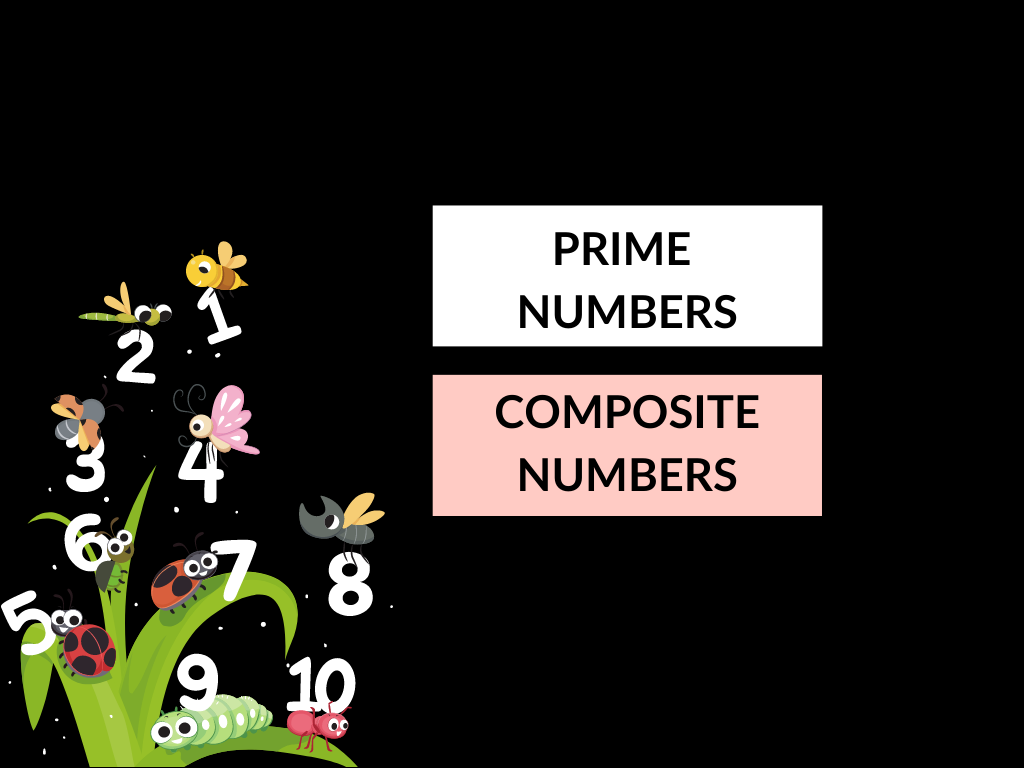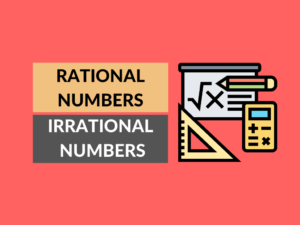Prime Numbers and Composite Numbers are the two types of numbers, that differ based on the number of factors they have. In this lesson, the details about Prime Numbers and Composite Numbers are given in detail along with examples and charts. The chart of Prime Numbers and Composite Numberswill help to identify them easily.
What are Prime numbers?
A prime number is a positive integer having exactly two factors. If p is a prime, then its only factors are necessarily 1 and p itself. Any number which does not follow this is termed a composite number, which means that it can be factored into other positive integers.
First Ten Prime Numbers
The first ten primes are 2, 3, 5, 7, 11, 13, 17, 19, 23, 29.
Note: It should be noted that 1 is a non-prime number.
List of Prime Numbers 1 to 20
As we know, the prime numbers are the numbers that have only two factors which are 1 and the number itself. There are several primes in the number system. Let us provide here the list of prime numbers that are present between 1 and 20, along with their factors and prime factorization.
| Prime numbers between 1 to 20 | Factors | Prime factorisation |
|---|---|---|
| 2 | 1, 2 | 1 x 2 |
| 3 | 1, 3 | 1 x 3 |
| 5 | 1,5 | 1 x 5 |
| 7 | 1,7 | 1 x 7 |
| 11 | 1,11 | 1 x 11 |
| 13 | 1, 13 | 1 x 13 |
| 17 | 1, 17 | 1 x 17 |
| 19 | 1, 19 | 1 x 19 |
Properties of Prime Numbers
Some of the properties of prime numbers are:
- Every number greater than 1 can be divided by at least one prime number.
- Every even positive integer greater than 2 can be expressed as the sum of two primes.
- Except for 2, all other prime numbers are odd. In other words, we can say that 2 is the only even prime number.
- Two prime numbers are always coprime to each other.
What are Composite Numbers?
The integers which can be generated by multiplying the two smallest positive integers and contain at least one divisor other than the number ‘1’ and itself are known as composite numbers. These numbers always have more than two factors.
Fact: Any even number which is greater than 2 is a composite number.
How to Determine the Composite Number?
The procedures to find whether a given number is prime or composite:
- Find all the factors of the positive integer
- A number is said to be prime if it has only two factors, 1 and itself.
- If the number has more than two factors, then it is a composite.
Example: Find if 14 is a composite number.
Let us find the factors of 14.
- 14÷1 = 14
- 14÷2 = 7
- 14÷7 = 2
- 14÷14 = 1
As we can see, the factors of 14 are 1,2,7, and 14, so it is a composite number.
List of Composite Numbers
The positive integers having more than two factors are composite numbers. The list of composite numbers up to 150 are:
| 4, 6, 8, 9, 10, 12, 14, 15, 16, 18, 20, 21, 22, 24, 25, 26, 27, 28, 30, 32, 33, 34, 35, 36, 38, 39, 40, 42, 44, 45, 46, 48, 49, 50, 51, 52, 54, 55, 56, 57, 58, 60, 62, 63, 64, 65, 66, 68, 69, 70, 72, 74, 75, 76, 77, 78, 80, 81, 82, 84, 85, 86, 87, 88, 90, 91, 92, 93, 94, 95, 96, 98, 99, 100, 102, 104, 105, 106, 108, 110, 111, 112, 114, 115, 116, 117, 118, 119, 120, 121, 122, 123, 124, 125, 126, 128, 129, 130, 132, 133, 134, 135, 136, 138, 140, 141, 142, 143, 144, 145, 146, 147, 148, 150, 152, 154, 155, 156, 157, 158, 159, 160, 162, 164, 165, 166, 168, 170, 172, 174, 175, 176, 177, 178, 180, 182, 184, 185, 186, 187, 188, 189, 190, 192, 194, 195, 196, and 198. |
Difference Between Prime Numbers and Composite Numbers:
| Prime Numbers | Composite Numbers |
|---|---|
| A prime number has two factors only. | A composite number has more than two factors. |
| It can be divided by 1 and the number itself. For example, 2 is divisible by 1 and 2. | It can be divided by all its factors. For example, 6 is divisible by 2,3, and 6. |
| Examples: 2, 3, 7, 11, 109, 113, 181, 191, etc. | Examples: 4, 8, 10, 15, 85, 114, 184, etc. |
Also Read: Difference Between Area and Perimeter.





